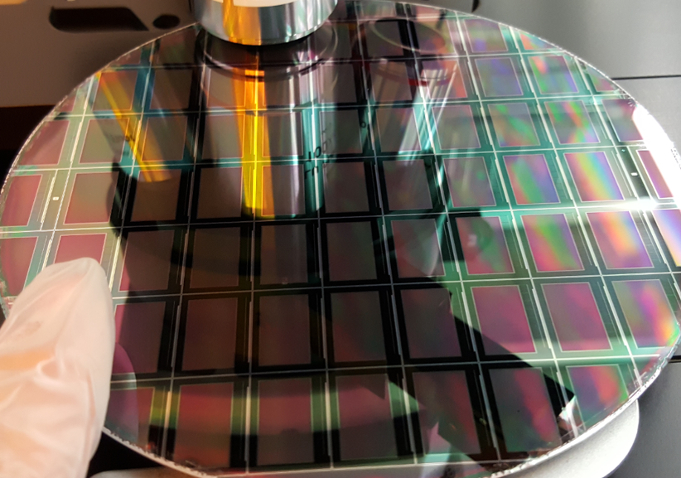Plessey to work with JDC on microLEDs

Plessey Semiconductors has announced a strategic partnership with Jasper Display Corp (JDC) in which Plessey will use use JDC's innovative silicon backplane to drive its own monolithic microLED displays manufactured on proprietary GaN-on-Silicon (GaN-on-Si) wafers.
Unveiled by JDC earlier this year at CES in Las Vegas, the eSP70 silicon backplane is tailored for the needs of microLED devices. The full colour capable active matrix backplane features a resolution of 1920à—1080, a pixel pitch of 8µm and offers current uniformity via a proprietary current source pixel as well as flexible addressing.
Making displays brighter for today's portable AR and VR battery-powered devices is increasingly challenging. Using existing technologies which require high power output is a serious design limitation as the compact devices have limited space to house on-board power sources. By using JDC's eSP70 backplane, this will allow Plessey the flexibility to use its GaN-on-Si platform for microLEDs, delivering very high brightness with moderate power consumption or run with low power while maintaining daylight usable brightness levels.
JDC's VP marketing and product management, T.I. Lin, said: "Plessey's monolithic microLED array is a great match to JDC's high density silicon backplane. Our JD27E series demonstrates our ability to deliver what our valuable partner Plessey and the wider industry has been waiting for "“ silicon that has been designed with their microLED needs in mind. Our X-on-Silicon backplane technology for microLED can be customised on a per-project basis, allowing us to make specialised silicon suiting needs ranging from low-power AR headsets all the way to automotive headlights."
Keith Strickland, CTO at Plessey, explained: "JDC's microLED specific silicon backplane allows Plessey to rapidly bring to market our monolithic full colour microLED array at our entry level 8µm pixel size. At Plessey, we have overcome the significant challenges involved in accurately aligning and bonding the microLED array with the backplane. We are looking forward to partnering with JDC as we continue our development, reducing pixel and display size."
MicroLED technology is fast emerging as a technology that can provide high luminance in a very small form factor with minimal energy consumption, necessary for reducing costs and enabling lightweight battery-powered AR/ VR/ MR/ HUD applications. It challenges existing display technologies like LCD and OLED.


































